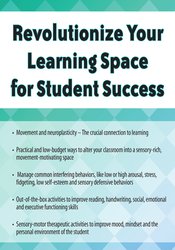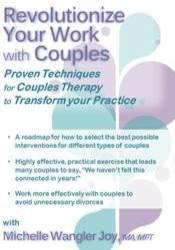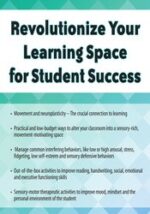Do your students complain about being tired? Is it hard for them to sit-up straight after hours of seated instruction? Is there enough clutter in the classroom to cause a panic attack? Does daydreaming and fidgeting replace attentive and ready-to-learn behaviors?
Â
Justin Lyons – Revolutionize Your Learning Space for Student Success
Â
What does the physical and emotional climate of your classroom look like?
Do your students complain about being tired? Is it hard for them to sit-up straight after hours of seated instruction? Is there enough clutter in the classroom to cause a panic attack? Does daydreaming and fidgeting replace attentive and ready-to-learn behaviors?
Watch this recording to assess the state of your school today and the different environments of learning to better address the needs of students.
You’ll earn how neuroplasticity, our sensory system and ergonomics work together to advance learning and academic success! You’ll discover how universal design concepts, in both learning and architecture, will foster the right educational climate for all students!
Get immediately download Justin Lyons – Revolutionize Your Learning Space for Student Success
Then we dive right into:
Managing common interfering behaviors, like low or high arousal, fidgeting, low self-esteem and sensory defensive behaviors
Tons of out-of-the-box movement and sensory-based activities/strategies to improve reading, handwriting, social, emotional and executive functioning skills
Handouts and checklists to assess your various school environments
Practical, low-budget ways to alter your classroom into a sensory-rich, movement-motivating space to support learning, self-regulation and personal health and wellness
Tackling stress, under-aroused or dysregulated behaviors in students through mindfulness
Using the power of language and other sensory-motor therapeutic activities to improve mood, mindset and the personal environment of the student
Finish this program feeling confident in your ability to create neuro-friendly spaces to meet the academic and emotional needs of your students.








